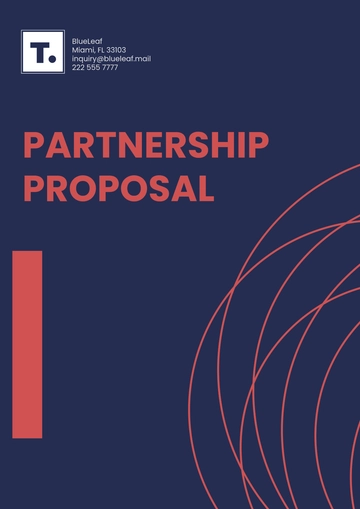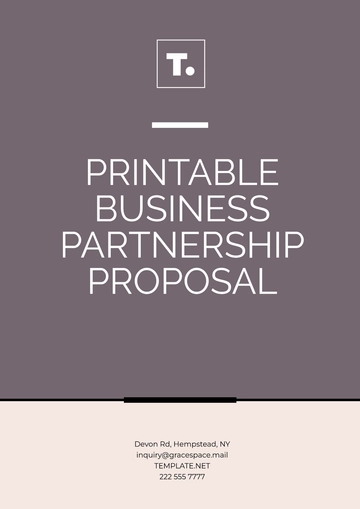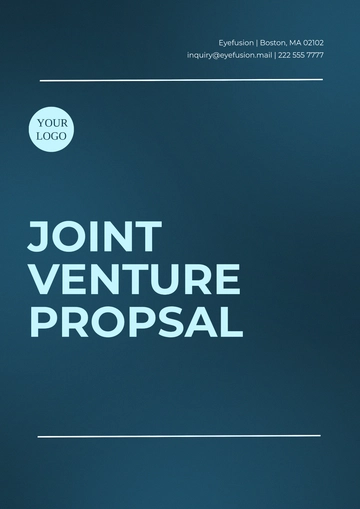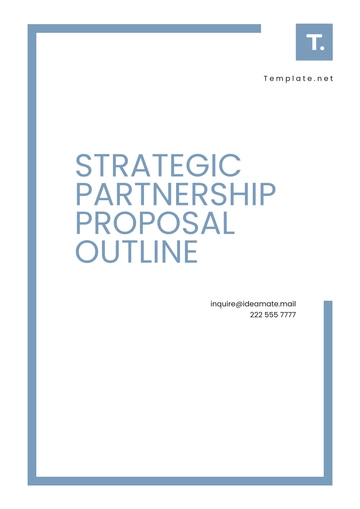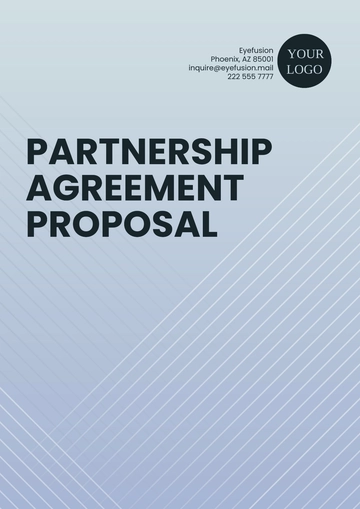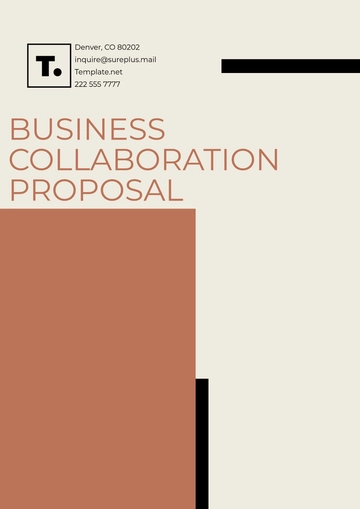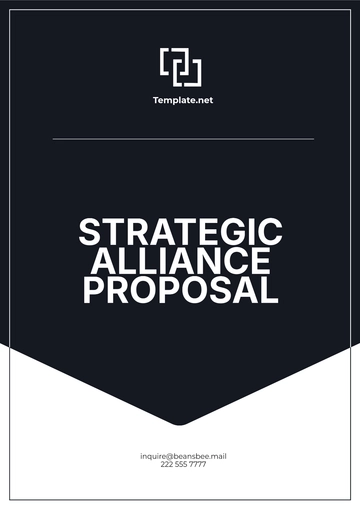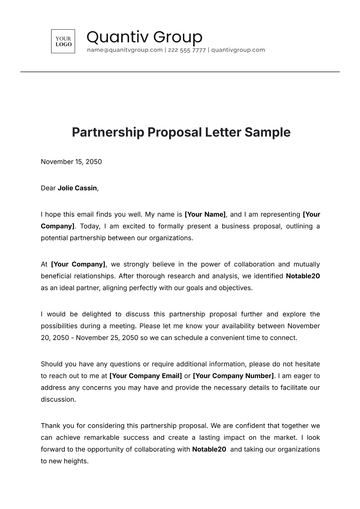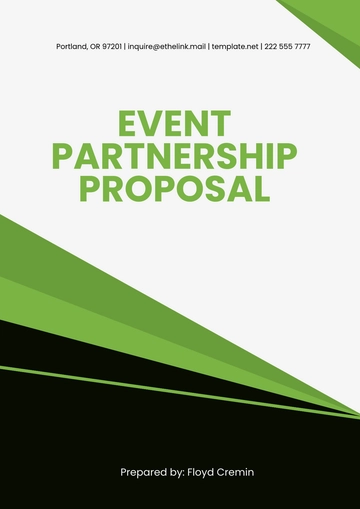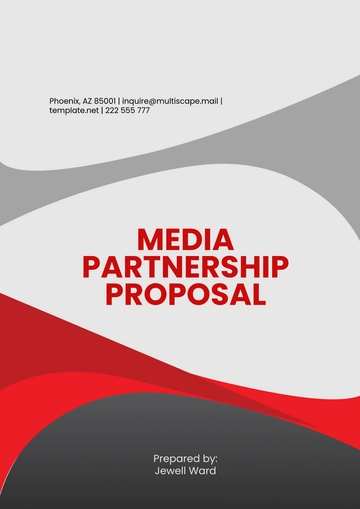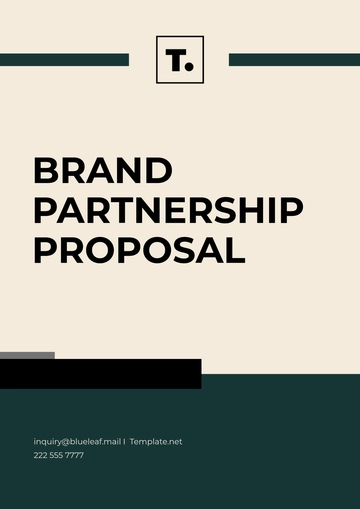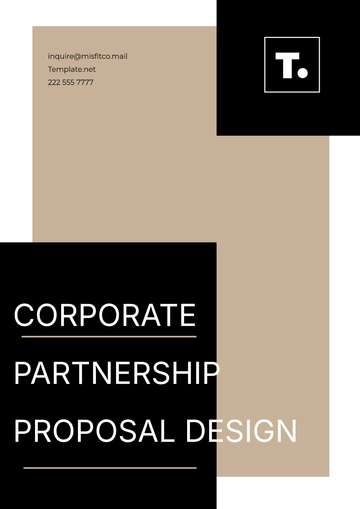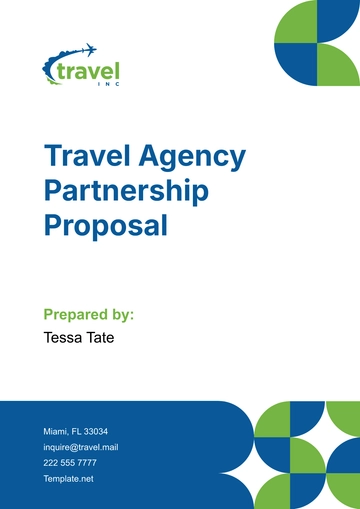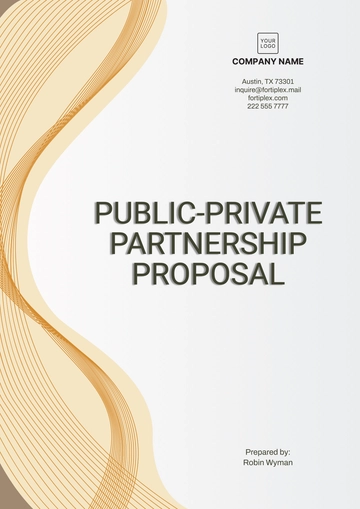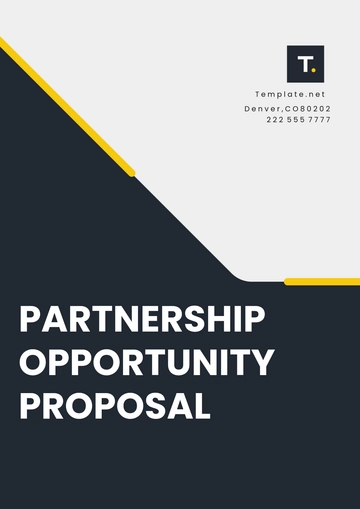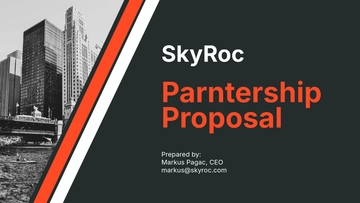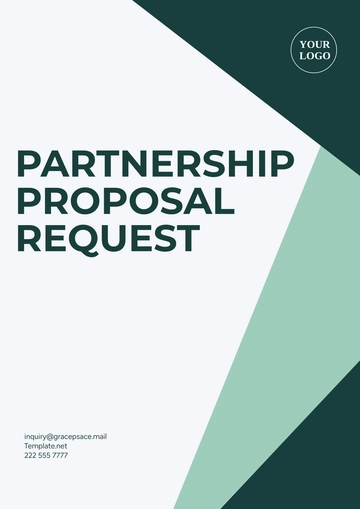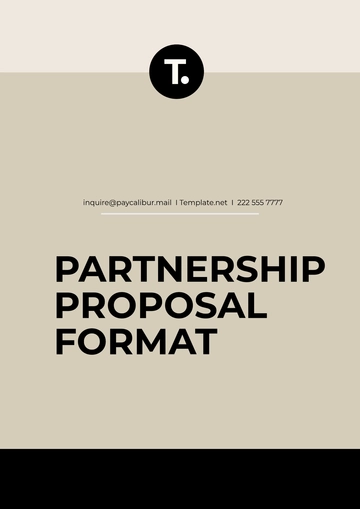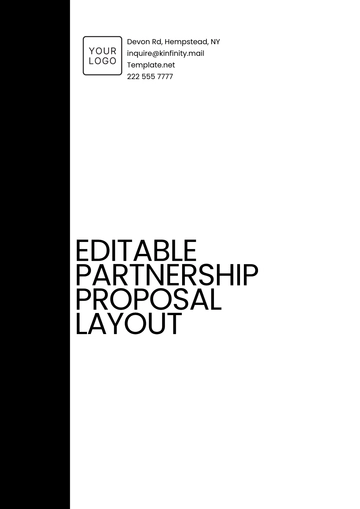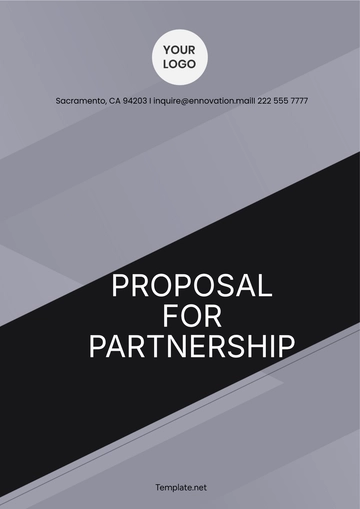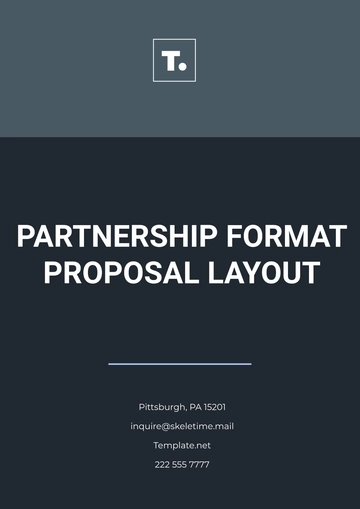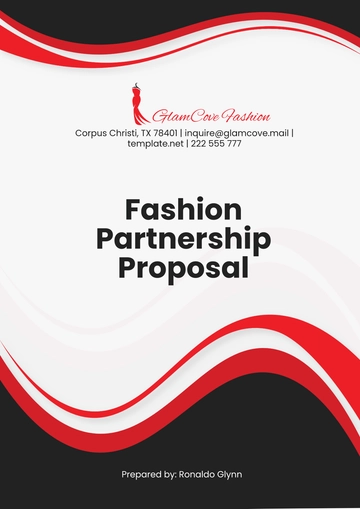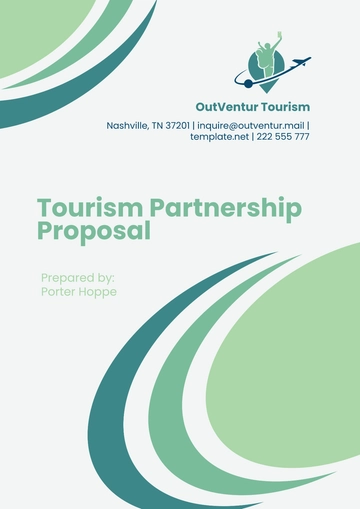Free Interior Design Partnership Proposal

I. Introduction
A. Overview of the Proposal
This Interior Design Partnership Proposal represents an exciting opportunity for [Your Company Name] and [Second Party] to combine their expertise and resources in delivering exceptional interior design solutions. By leveraging our collective strengths, we aim to create a synergy that enhances the overall quality and success of [Project Name]. This proposal serves as a roadmap for our collaboration, outlining the framework and objectives for achieving our shared vision.
B. Background Information about the Parties Involved
[Your Company Name] brings years of experience and a proven track record of delivering innovative and award-winning interior design projects. Our portfolio showcases our commitment to creativity, functionality, and client satisfaction. [Second Party] is a respected leader in the architectural industry, known for its cutting-edge designs and meticulous attention to detail. Together, we form a dynamic partnership poised to exceed client expectations and set new standards in design excellence.
C. Purpose of the Partnership
The primary purpose of this partnership is to harness the complementary skills and expertise of [Your Company Name] and [Second Party] to deliver a comprehensive and integrated design solution for [Project Name]. By collaborating closely from the project's inception to completion, we aim to create seamless transitions between architectural and interior elements, resulting in a cohesive and harmonious environment. Our shared goal is to elevate the project's aesthetic appeal, functionality, and overall value, while ensuring a memorable and enriching experience for its occupants.
II. Project Overview
A. Brief Description of the Interior Design Project
[Project Name] is a visionary [type of project, e.g., mixed-use development, corporate headquarters, luxury resort] located in [location]. Spanning [size or area], the project presents an exciting opportunity to redefine the standards of design excellence and innovation. Our scope includes [list of interior design services, e.g., concept development, space planning, material selection, and furnishings], with a focus on creating immersive and experiential spaces that inspire and delight.
B. Goals and Objectives
Our overarching goal for [Project Name] is to create a distinctive and memorable environment that reflects the aspirations and identity of our client. We aim to craft spaces that not only meet functional requirements but also evoke emotional connections and leave lasting impressions. By prioritizing collaboration, creativity, and sustainability, we strive to exceed client expectations and deliver a project that stands as a testament to our collective vision and commitment to excellence.
C. Scope of Work
The scope of work encompasses a comprehensive range of interior design services, including but not limited to conceptual design development, space planning, material and finish selections, lighting design, furniture procurement, and project management. Our approach is grounded in a deep understanding of the project's objectives, site context, user needs, and aesthetic preferences. Throughout the process, we will maintain open communication, collaboration, and flexibility to ensure alignment with the project's vision and goals.
III. Partnership Structure
A. Roles and Responsibilities of Each Partner
[Your Company Name] will lead the interior design aspects of the project, providing expertise in creative conceptualization, space planning, and interior detailing. [Second Party] will oversee the architectural components, including building design, structural coordination, and regulatory compliance. Together, we will collaborate closely to integrate architectural and interior elements seamlessly, ensuring a cohesive and harmonious design outcome.
B. Decision-Making Process
Decisions will be made collaboratively through regular meetings, workshops, and design charrettes involving key stakeholders from both parties. Major design decisions will be guided by a shared vision and informed by rigorous analysis, research, and client feedback. Our goal is to foster an inclusive and participatory decision-making process that values diverse perspectives, promotes innovation, and ultimately leads to design solutions of the highest quality and relevance.
C. Communication Channels
Effective communication is essential to the success of our partnership. We will establish clear channels of communication, including regular meetings, email correspondence, and shared project management platforms. Open and transparent communication will facilitate the exchange of ideas, feedback, and information, enabling us to address challenges proactively, resolve issues efficiently, and maintain alignment with project objectives and timelines.
IV. Project Timeline
A. Milestones and Deliverables
Key milestones include conceptual design presentation, design development review, construction documentation completion, procurement, and project handover. Deliverables will be tailored to meet the specific requirements of each phase and will be subject to review and approval by the project team and client.
B. Proposed Schedule
The proposed schedule outlines a structured timeline for the project, including key milestones, deadlines, and dependencies. The schedule will be dynamic and responsive to evolving project needs, external factors, and stakeholder feedback. Regular monitoring and adjustment will ensure adherence to timelines and proactive management of potential risks and delays.
C. Timeline for Meetings and Reviews
Regular meetings will be scheduled at critical junctures throughout the project lifecycle to review progress, discuss design options, and address any emerging issues or concerns. Additional meetings will be scheduled as needed to accommodate client feedback, regulatory approvals, and other project requirements. Our goal is to maintain a cadence of communication and collaboration that fosters momentum, accountability, and shared ownership of project outcomes.
V. Budget and Resource Allocation
A. Financial Contributions from Each Partner
[Your Company Name] and [Second Party] will contribute financially to cover their respective scopes of work, as outlined in the partnership agreement. Financial contributions will be transparent, equitable, and reflective of the value added by each partner to the project.
B. Budget Breakdown for Design, Materials, and Other Expenses
The budget will be allocated to cover design fees, consultant fees, material costs, furnishings, fixtures, equipment, and other project-related expenses. A detailed budget breakdown will be provided to the client for approval, with provisions for contingencies and unforeseen costs.
C. Resource Allocation Plan
Resources, including human resources, technology, and facilities, will be allocated based on project requirements, priorities, and availability. Resource allocation will be dynamic, responsive, and optimized to ensure efficiency, productivity, and quality outcomes. Regular monitoring and adjustment will ensure alignment with project objectives, timelines, and budget constraints.
VI. Legal and Administrative Considerations
A. Contractual Agreements
A comprehensive partnership agreement will be drafted to formalize the terms and conditions of our collaboration. The agreement will outline the rights, responsibilities, and obligations of each party, including scope of work, project deliverables, payment terms, dispute resolution mechanisms, and termination clauses. Legal counsel will review and finalize the agreement to ensure compliance with applicable laws and regulations.
B. Intellectual Property Rights
Intellectual property rights will be addressed in the partnership agreement to protect the proprietary interests of both parties. Ownership of design concepts, drawings, specifications, and other project deliverables will be clearly defined, with provisions for licensing, use, and reproduction as necessary. Confidentiality agreements and non-disclosure clauses will also be included to safeguard sensitive information and trade secrets.
C. Insurance Coverage
Both parties will maintain adequate insurance coverage to mitigate risks and liabilities associated with the project. Insurance policies will include professional liability insurance, general liability insurance, and workers' compensation insurance, among others. Certificates of insurance will be provided to verify coverage and ensure compliance with contractual requirements. Regular reviews of insurance policies will be conducted to assess coverage adequacy and address any changes in project scope or risk profile.
VII. Risk Management
A. Identification of Potential Risks
A comprehensive risk assessment will be conducted to identify potential risks and vulnerabilities associated with the project. Risks may include budget overruns, schedule delays, design conflicts, regulatory compliance issues, supply chain disruptions, and force majeure events. Risks will be categorized, prioritized, and documented to facilitate proactive mitigation strategies.
B. Strategies for Mitigating Risks
Risk mitigation strategies will be developed and implemented to minimize the likelihood and impact of identified risks. Strategies may include contingency planning, risk transfer mechanisms, alternate procurement strategies, resource allocation adjustments, and contractual protections. Regular monitoring and review of risk mitigation measures will be conducted to ensure effectiveness and responsiveness to changing project conditions.
C. Contingency Plans
Contingency plans will be developed for high-impact risks to ensure timely resolution and minimize project disruptions. Contingency reserves will be allocated to cover unforeseen expenses, schedule deviations, or scope changes. Contingency plans will be integrated into project management processes and regularly updated to reflect evolving risk profiles and project requirements. Open communication and collaboration will be maintained to ensure all stakeholders are informed and engaged in risk management efforts.
VIII. Communication and Collaboration
A. Methods of Communication
Effective communication is essential for successful collaboration. We will utilize a variety of communication channels, including email, phone calls, video conferences, and in-person meetings, to facilitate regular and transparent communication. Additionally, we will leverage collaborative project management platforms and document sharing tools to streamline communication and ensure accessibility to project information for all stakeholders.
B. Frequency of Updates and Progress Reports
Regular updates and progress reports will be provided to keep all stakeholders informed of project status, milestones achieved, and upcoming tasks. These updates will be tailored to the needs of different stakeholders and may include weekly progress reports, monthly executive summaries, and ad hoc updates as needed. Feedback loops will be established to solicit input and ensure alignment with project objectives and expectations.
C. Collaboration Tools and Platforms
We will leverage collaborative tools and platforms to enhance efficiency and productivity in our collaboration. Project management software will be used to track tasks, timelines, and resource allocations, while document sharing platforms will facilitate real-time collaboration on design documents, specifications, and other project deliverables. Virtual design tools may also be utilized to facilitate design reviews, presentations, and virtual walkthroughs, enabling stakeholders to visualize and provide feedback on design concepts and proposals.
IX. Performance Measurement
A. Key Performance Indicators (KPIs)
Key performance indicators (KPIs) will be established to measure the success and effectiveness of our collaboration. KPIs may include client satisfaction ratings, project delivery performance metrics (e.g., schedule adherence, budget variance), design quality assessments, and team performance evaluations. These KPIs will be tracked throughout the project lifecycle to monitor progress, identify areas for improvement, and drive continuous performance enhancement.
B. Metrics for Evaluating Success
Success will be evaluated based on the achievement of project objectives, client satisfaction, stakeholder feedback, and adherence to project constraints (e.g., budget, schedule, scope). Metrics such as client retention rates, project profitability, and industry recognition may also be used to assess the overall success and impact of our collaboration. Regular performance reviews and retrospective analyses will be conducted to identify lessons learned and best practices for future projects.
C. Performance Review Process
Regular performance reviews will be conducted to evaluate project progress, team performance, and adherence to project goals and standards. Feedback will be solicited from clients, project team members, and other stakeholders to identify areas of strength and opportunities for improvement. Performance reviews will be conducted at key project milestones and at project completion, with action plans developed to address any identified gaps or areas for enhancement.
X. Dispute Resolution
A. Procedures for Handling Disputes
Clear procedures for handling disputes will be established to ensure prompt and fair resolution of conflicts. Disputes will be addressed through direct communication, negotiation, and collaboration between project stakeholders. In the event that disputes cannot be resolved informally, formal dispute resolution mechanisms, such as mediation or arbitration, may be pursued as outlined in the partnership agreement.
B. Escalation Process
An escalation process will be established to facilitate resolution of disputes that cannot be resolved at the project team level. Disputes will be escalated to senior management or designated representatives from each party for further review and resolution. The escalation process will ensure transparency, accountability, and timely resolution of disputes to minimize project disruptions and maintain positive working relationships.
C. Mediation or Arbitration Mechanisms
In the event that disputes cannot be resolved through negotiation or escalation, mediation or arbitration may be pursued as alternative dispute resolution mechanisms. A neutral mediator or arbitrator will be selected to facilitate resolution in a fair and impartial manner. Both parties will cooperate in good faith to reach a mutually acceptable resolution, with the goal of preserving the integrity of the partnership and minimizing legal costs and disruptions to the project.
XI. Confidentiality and Non-Disclosure
A. Confidentiality Agreements
To protect sensitive information and proprietary data shared during the project, all stakeholders will be required to sign confidentiality agreements. These agreements will outline the obligations and responsibilities of each party regarding the handling, use, and disclosure of confidential information. By safeguarding confidential information, we ensure the integrity of the project and maintain trust and confidence among all stakeholders.
B. Protection of Sensitive Information
Measures will be implemented to safeguard sensitive information throughout the project lifecycle. Secure data storage systems and access controls will be put in place to prevent unauthorized access or disclosure of confidential information. Encryption protocols and secure communication channels will be utilized to protect data during transmission and sharing, ensuring compliance with data protection regulations and industry standards.
C. Non-Disclosure Clauses
Non-disclosure clauses will be included in contractual agreements to prevent unauthorized disclosure or use of confidential information by third parties. These clauses will restrict the use of confidential information for purposes unrelated to the project and impose penalties for breaches of confidentiality. By enforcing non-disclosure clauses, we protect the intellectual property rights and commercial interests of all parties involved in the project.
XII. Conclusion
A. Summary of the Proposal
In summary, this Interior Design Partnership Proposal outlines the framework and terms for collaboration between [Your Company Name] and [Second Party] on [Project Name]. By leveraging our collective expertise, resources, and commitment to excellence, we aim to deliver a transformative and impactful interior design solution that exceeds client expectations and elevates the project to new heights. We are confident that our collaborative approach, clear communication, and shared dedication to quality and innovation will result in a successful partnership and a truly exceptional outcome for [Project Name].
B. Next Steps and Timeline for Decision-Making
We invite [Second Party] to review and provide feedback on the proposal, with the goal of finalizing the partnership agreement and commencing work on [Project Name] at the earliest opportunity. A timeline for decision-making and contract finalization will be established to ensure timely commencement of project activities and alignment with project milestones and objectives. We look forward to the opportunity to collaborate closely with [Second Party] and embark on this exciting journey together.
C. Contact Information for Further Discussion
For further discussion or clarification regarding the proposal, please do not hesitate to contact [Your Name] at [Your Email] or [Your Number]. We are available to address any questions, concerns, or inquiries and are committed to facilitating a smooth and successful partnership between our organizations. Thank you for considering this proposal, and we look forward to the opportunity to work together on [Project Name].
- 100% Customizable, free editor
- Access 1 Million+ Templates, photo’s & graphics
- Download or share as a template
- Click and replace photos, graphics, text, backgrounds
- Resize, crop, AI write & more
- Access advanced editor
Discover the ultimate Interior Design Partnership Proposal Template at Template.net! Crafted by experts, this editable and customizable template offers unparalleled convenience. With our AI Editor Tool, tailor the proposal to your exact specifications effortlessly. Elevate your collaboration with clarity and professionalism. Get started today and unlock the potential of seamless partnership proposals like never before.
You may also like
- Business Proposal
- Research Proposal
- Proposal Request
- Project Proposal
- Grant Proposal
- Photography Proposal
- Job Proposal
- Budget Proposal
- Marketing Proposal
- Branding Proposal
- Advertising Proposal
- Sales Proposal
- Startup Proposal
- Event Proposal
- Creative Proposal
- Restaurant Proposal
- Blank Proposal
- One Page Proposal
- Proposal Report
- IT Proposal
- Non Profit Proposal
- Training Proposal
- Construction Proposal
- School Proposal
- Cleaning Proposal
- Contract Proposal
- HR Proposal
- Travel Agency Proposal
- Small Business Proposal
- Investment Proposal
- Bid Proposal
- Retail Business Proposal
- Sponsorship Proposal
- Academic Proposal
- Partnership Proposal
- Work Proposal
- Agency Proposal
- University Proposal
- Accounting Proposal
- Real Estate Proposal
- Hotel Proposal
- Product Proposal
- Advertising Agency Proposal
- Development Proposal
- Loan Proposal
- Website Proposal
- Nursing Home Proposal
- Financial Proposal
- Salon Proposal
- Freelancer Proposal
- Funding Proposal
- Work from Home Proposal
- Company Proposal
- Consulting Proposal
- Educational Proposal
- Construction Bid Proposal
- Interior Design Proposal
- New Product Proposal
- Sports Proposal
- Corporate Proposal
- Food Proposal
- Property Proposal
- Maintenance Proposal
- Purchase Proposal
- Rental Proposal
- Recruitment Proposal
- Social Media Proposal
- Travel Proposal
- Trip Proposal
- Software Proposal
- Conference Proposal
- Graphic Design Proposal
- Law Firm Proposal
- Medical Proposal
- Music Proposal
- Pricing Proposal
- SEO Proposal
- Strategy Proposal
- Technical Proposal
- Coaching Proposal
- Ecommerce Proposal
- Fundraising Proposal
- Landscaping Proposal
- Charity Proposal
- Contractor Proposal
- Exhibition Proposal
- Art Proposal
- Mobile Proposal
- Equipment Proposal
- Student Proposal
- Engineering Proposal
- Business Proposal
